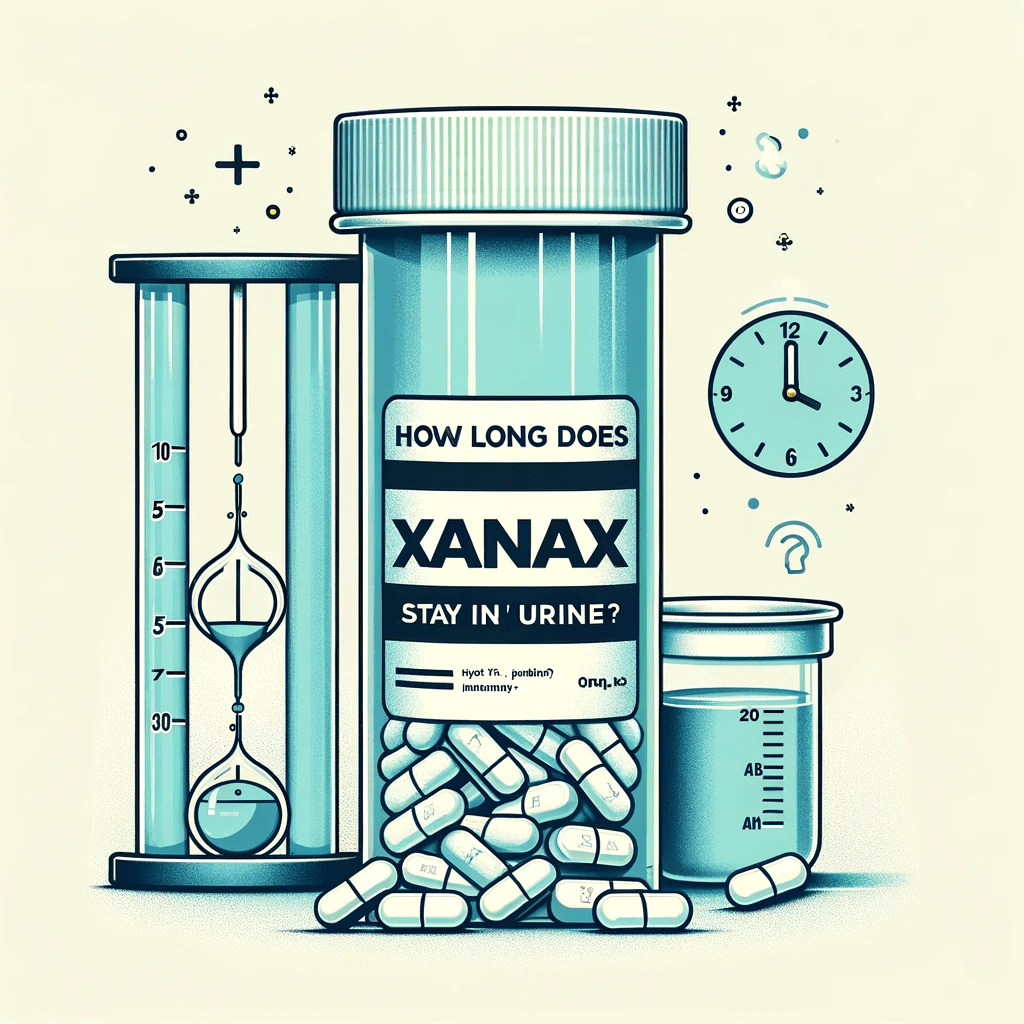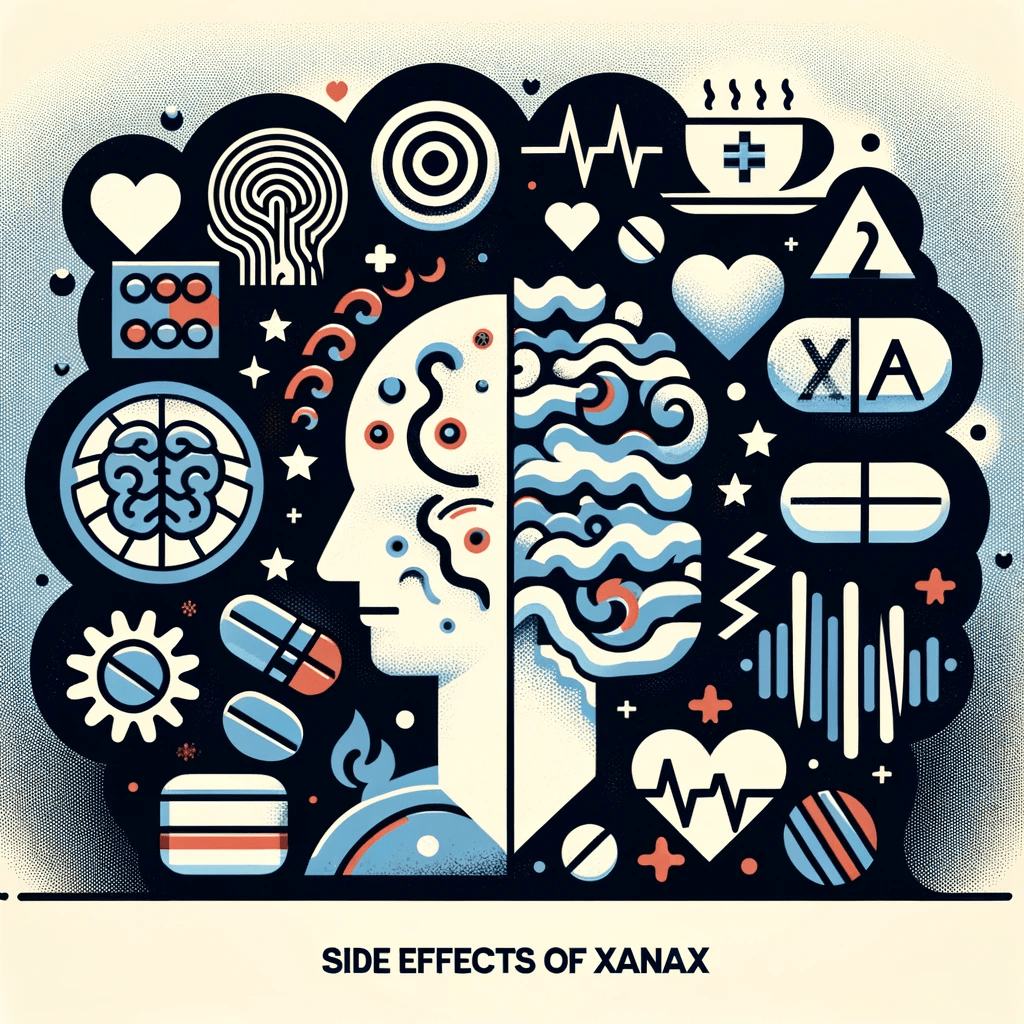How Long Does Xanax Stay in Urine?

- Xanax is a Schedule IV drug, meaning it comes with some risk of addiction, especially with any misuse.
- Xanax is a central nervous system depressant that binds to the GABA receptors in your body.
- Alprazolam is the active ingredient in Xanax (a benzodiazepine) and can be detected post-ingestion in your urine from 36 hours (1.5 days) to 168 hours (7 days).
- If you stop taking Xanax, you may feel increased anxiety or withdrawal.
- Safely reducing any medication should only occur under the guidance of your physician.
- If you’ve developed a dependence or addiction to Xanax, professional treatment can help you restore natural balance and recover safely.
Xanax is a specific brand name for the active ingredient alprazolam. Alprazolam is a benzodiazepine approved by the FDA for treating anxiety and panic disorders. Alprazolam can be detected post-ingestion in your urine from 36 hours (1.5 days) to 168 hours (7 days).[1][2]
Xanax Drug Facts
Xanax is a specific medication inside a class of drugs known as benzodiazepines.
It’s a Schedule IV drug, which means the federal government believes it has a “low potential for misuse and addiction.” Like the barbiturates it replaced, Xanax produces a calming or hypnotic effect on the user.
If used chronically, Xanax carries a high potential for addiction.
History
From 1957 to 1963, there were 1165 overdose deaths related to barbiturates in New York City alone.[3] In the United Kingdom in 1968, there were over 24.7 million prescriptions issued for barbiturates.[4] Society had a deathly love affair with barbiturates.
Part of the reason is that the therapeutic index for barbiturates is so narrow. That is to say, the difference between the therapeutic dose and the fatal dose is so narrow it’s easy to misjudge it.
Barbiturates were extremely effective for epileptic patients and patients undergoing pre-operative surgery, so a less addictive alternative was sought. Psychiatrists used to treat patients with “catatonia” with doses of barbiturates to be able to stimulate conversation for a few hours before they slipped back into a non-responsive state.[5]
When benzodiazepines were tried beginning in the 1960s, many physicians were hopeful they could perform the same function as barbiturates without the addictive potential. Fast-forward to the 2000s, and benzodiazepines have nearly completely replaced barbiturates.
Mechanism of Action
Like barbiturates, Xanax is a central nervous system depressant. It binds to the GABA receptors in your body, which typically accept the binding of GABA-inhibitory neurotransmitters.[6] Xanax enhances the effect of GABA, an inhibitory neurotransmitter, rather than increasing its production. By enhancing GABA’s effect, it increases the inhibition of brain activity, leading to a calming effect. This action slows down the transmission of messages in the central nervous system.
That is why Xanax has a calming effect. However, your body will eventually build up a tolerance to Xanax, so it needs increasing dosage amounts to achieve the same calming effect.
Eventually, if used chronically, the calming effect from Xanax will cease to be a departure from the expected and will become the “expected.” In this case, if the user stops taking Xanax, they will likely feel anxious as if their brain is moving too fast (when, in reality, they are moving at just the normal speed).
What is the Half-Life of Xanax?
Half of the alprazolam in your body is filtered out by your kidneys within 11.2 hours of ingestion and excreted through your urine.[7]
Since it takes 4-5 elimination half-lives to statistically eliminate a substance from your body, that means it takes around 2 days (about 44 to 55 hours) to eliminate Xanax from your body.
Just because Xanax gets eliminated in 44-55 hours does not mean all traces of it are gone. For instance, your hair records what you have ingested for 90 days. While it may be gone from your tissue stores, it can still be found in other body parts.
Side Effects of Xanax
There is a long list of side effects of taking Xanax, and many of its side effects mirror the side effects of drinking alcohol. Xanax can cause respiratory depression, especially when taken in high doses or combined with other central nervous system depressants like alcohol or opioids. The risk of respiratory depression increases with higher doses.
Beyond the intended calming effect for patients experiencing anxiety or panic disorders, there are many other side effects of taking Xanax[8]:
Common Mental Side Effects
- Mental fogginess
- Depression
- Low sex drive
- Sleepiness
- Fatigue
- Dizziness
- Broken sleep
- Memory impairment
- Poor balance
- Slurred speech
- Trouble concentrating
- Moody
Common Physical Side Effects
- Diarrhea
- Constipation
- More sweating
- Headaches
- Nausea and vomiting
- Upset stomach
- Vision impairment
- Weight changes
- Swelling of hands or feet
- Muscle weakness
- Dry mouth
- Stuffy nose
- Over-active, energetic behavior
How Long Does Xanax Stay in Your Urine?
Benzodiazepines, including Xanax, are present in your urine for up to 7 days.[9]
When you ingest benzodiazepines, your body metabolizes the alprazolam. The metabolite of “alprazolam” is “hydroxyalprazolam”. These two chemicals can be detected as early as 36 hours after ingestion.[10]
What Influences How Long Xanax Can Be Detected in Your System?
Xanax is a fat-soluble molecule. It gets absorbed into the fat inside your body’s tissues. If you have more fat stores, you can store more of alprazolam and its metabolite, hydroxy alprazolam.
Users of Xanax will have different elimination rates due to biological factors such as ancestry, sex, age, weight, metabolism, and BMI that will impact how long Xanax remains in your system.
False Positives for Xanax
There is emerging evidence that suggests the prescription medicine Sertraline is associated with elevated levels of benzodiazepines in false benzodiazepine-positive tests.[11]
26.5% of false-positive results in a study were attributed to patients with a co-occurring benzodiazepine and sertraline prescription.[12] Sertraline is a prescription medication that prevents serotonin from being reabsorbed into synapses between neurons in the brain.
There are valid reasons to be taking sertraline, and it could have serious consequences if a drug test comes back positive for benzodiazepines.
Xanax Addiction Treatment
We understand Xanax may be a prescription substance to treat anxiety-related disorders. However, long-term use or misuse can lead to damaging addiction. Recovery is possible when addressing both the underlying mental health concerns and any substance abuse with comprehensive dual diagnosis treatment.
Whether you’re seeking help for yourself or a loved one, finding a safe haven is key. Epiphany Wellness offers just that, with facilities in Tennessee catering to drug and alcohol rehabilitation, a center in Nashville focusing on mental health treatments, and finally a dedicated addiction treatment facility in New Jersey. Embrace the courage to reach out. This could be the decision that transforms your life for the better.
Frequently Asked Questions About Xanax

